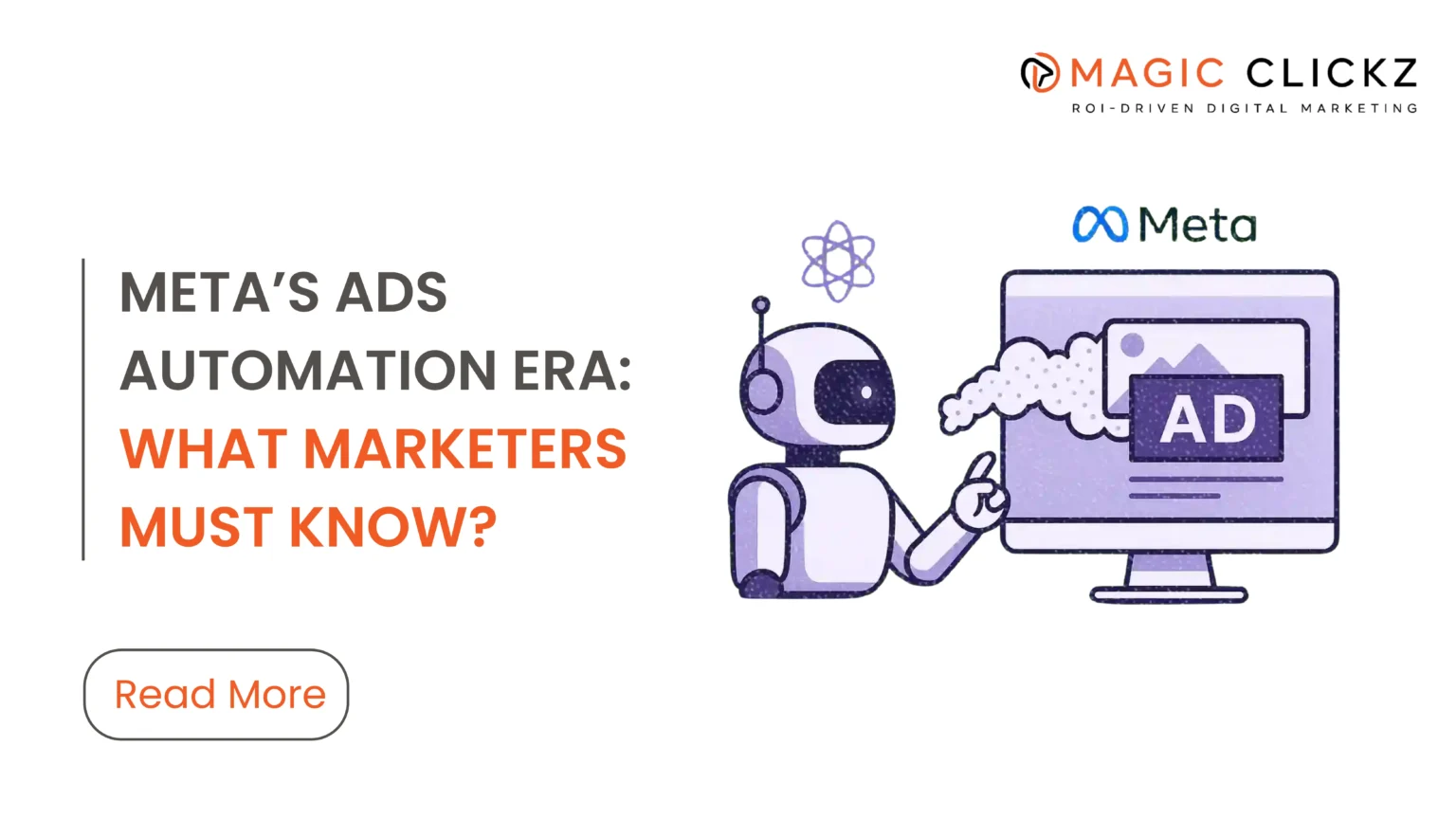
We’re a team of digital growth experts sharing insights, tips, and resources to help businesses perform better online. Simple. Actionable. Effective.
If you’ve been in the digital marketing loop lately, you’ve probably heard the whispers – or maybe the not-so-whispers – about Meta moving toward fully automated advertising. From Advantage+ campaigns to AI-generated creatives, marketers everywhere are asking the same question: what happens when the system decides for us? The excitement is real, but so is the uncertainty with Meta Ads Automation.

Agencies, in-house teams, and freelancers alike are debating strategies, experimenting with early Meta Ads automation, and racing to understand how to maintain control, creativity, and ROI in a world where AI is increasingly calling the shots.
It’s the marketing conversation you can’t afford to ignore.
You’ve probably noticed how Meta is pushing ad automation further than ever. Pretty soon, your campaigns could almost run themselves, deciding who sees your ads, when, and how much to spend. For us marketers, it’s thrilling – but also a bit unsettling.
Creatives are changing too. AI can now craft your ad copy, select images, or even assemble short videos optimized for your audience, leaving us to think more about strategy than the details.
Targeting is getting eerily smart. The system spots patterns and figures out who’s most likely to engage, almost like it knows your audience better than you do.
And your bidding? The AI tweaks it in real time to get the best results.
Even reporting is evolving. Key insights pop up automatically, so you can focus on guiding your campaigns and telling your brand’s story, instead of drowning in endless spreadsheets.
You’ve probably noticed the buzz in marketing circles – AI isn’t just a hype anymore, and Meta is leading the charge.
Over the past few years, campaigns have gradually shifted from fully manual setups to AI-assisted tools.
Now, we’re entering a phase where automation isn’t optional; it’s becoming the default.
For your brand, this means the way you run campaigns, test creatives, and target audiences is about to change.
We’re talking about a system that learns on the fly, optimizes budgets, and even decides which creative performs best.
It’s exciting, but it also means we need to rethink the role we play in ad management.
If Meta’s full automation arrives, the first thing you’ll notice is that much of the repetitive, manual work disappears. No more constant bid adjustments, tedious A/B testing, or manually managing audiences.
The AI will take over these tasks, analyzing millions of data points in real time and optimizing campaigns for performance without your constant input. It’s like handing over the day-to-day execution to a highly skilled digital strategist that never sleeps. Creative production is undergoing a major transformation as well. AI can now generate ad copy, select images, and even assemble short videos tailored to different audience segments. For you, this means faster creative cycles, more variants to test, and the ability to experiment at scale. You’re no longer constrained by team size or manual hours – the AI can produce hundreds of ad variations in the time it would normally take to create a handful. Audience targeting is becoming incredibly precise. Instead of manually segmenting by age, interests, or location, AI identifies patterns and predicts behavior, automatically finding people most likely to engage or convert. It’s almost like the system has an intuition for your audience – something we marketers spend years trying to develop manually. Budget allocation and bidding strategies are fully automated too. The AI constantly monitors performance, reallocates spend between campaigns, and adjusts bids in real time to maximize ROI. What used to take hours of analysis and tweaking can now happen instantly, freeing you to focus on higher-level strategy and creative direction. Even reporting and insights are evolving. AI surfaces key metrics automatically, highlights trends, and flags opportunities for improvement. Instead of digging through spreadsheets or dashboards, you get a clearer picture of performance – but interpreting it wisely is still where your expertise comes in.
If you want to stay ahead in this new era, preparation is key. You can’t just hand everything over to AI and hope for the best – your meta ads campaigns, data, and creative assets need to be ready to work with automation. Start with your creative library. Organize images, videos, and copy so AI can easily pull from high-quality assets. The more you provide, the better the system can personalize campaigns for your audiences. Next, focus on first-party data. Your website, CRM, and other owned data are gold mines for AI-driven targeting. Make sure your tracking is accurate, consent is compliant, and data flows smoothly into Meta’s systems. Experimentation is another must. Test Advantage+ campaigns or small AI-driven initiatives to understand how automation behaves. Learn which creative formats, audiences, and bidding strategies perform best before scaling. Finally, think about strategy and oversight. Automation handles execution, but you still set goals, interpret insights, and guide brand messaging. Keep a regular cadence of performance reviews to ensure the AI aligns with your vision. By preparing your ad stack now, you’re not just adapting — you’re positioning your campaigns to take full advantage of AI automation while maintaining control and creativity.
Meta ads automation era is no longer a distant concept – it’s happening now. For marketers, this shift brings efficiency, precision, and new opportunities to experiment and innovate.
At the same time, it challenges us to rethink our roles, maintain brand control, and focus on strategy and creativity.
By understanding what Meta ads automation can and cannot do, preparing your ad stack, and keeping a human touch at the center, you can turn this AI-driven era into a competitive advantage.
Embrace the change, experiment wisely, and let the AI handle the heavy lifting while you guide the vision.

Performance Marketing Experts
The Magic Clickz team consists of passionate digital marketers, designers, and developers dedicated to helping businesses grow online. Through our blogs, we share practical insights, proven strategies, and real-world experiences to empower brands with the knowledge they need to succeed in the digital landscape.
Do you want more conversions?












Do you want more conversions?
Stay ahead and discover digital trends, strategies, and innovation with us